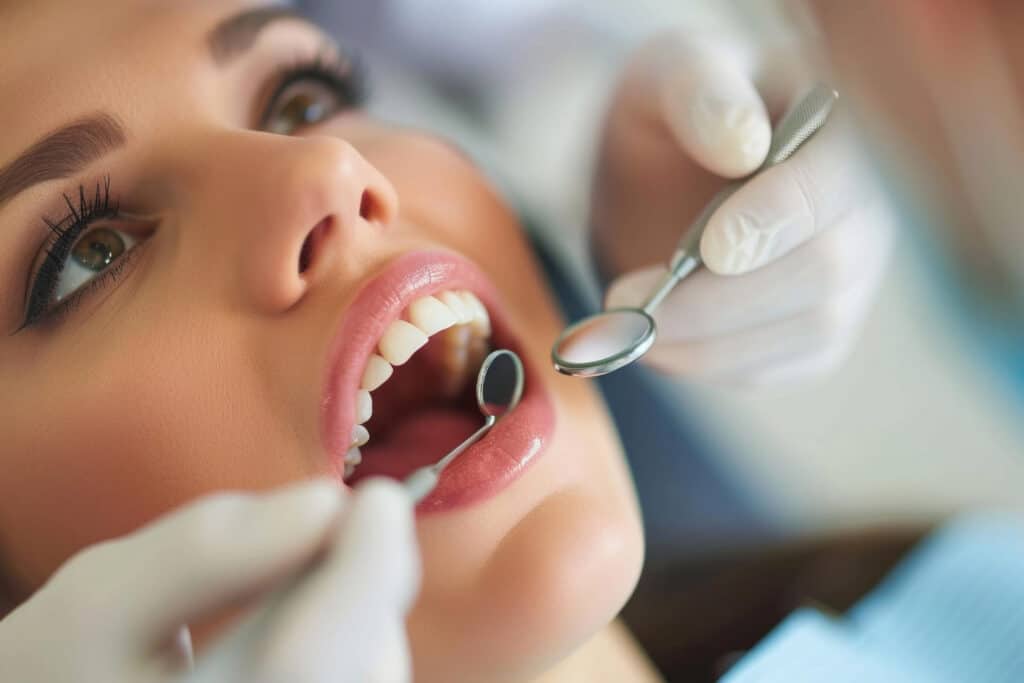In the realm of restorative dentistry, dental crowns and bridges serve as essential solutions for addressing various dental problems, from damaged or decayed teeth to tooth loss. At our family dental care practice in Pickering, ON, we are dedicated to offering comprehensive treatment options, including dental crowns and bridges, to help our patients achieve healthy, functional, and aesthetically pleasing smiles.
Dental crowns, also known as caps, are custom-made dental restorations designed to cover and protect damaged or decayed teeth, while bridges are used to replace one or more missing teeth by anchoring to adjacent healthy teeth or dental implants. Both of these restorations can be crafted from various materials, including porcelain, ceramic, metal, or a combination of materials, depending on factors such as the location of the tooth, the patient’s preferences, and the dentist’s recommendations.
Our experienced dental team is committed to providing personalized care for your dental health needs, ensuring you receive the best possible treatment options to restore your smile. Contact us today to schedule a consultation and learn more about dental crowns and bridges and their benefits for your dental health and overall well-being.
Applications and Benefits of Dental Crowns
Dental crowns are versatile restorations that offer a myriad of benefits for various dental issues. Some of their primary applications include:
1. Protecting Damaged Teeth
Crowns can be used to cover and protect teeth that have been weakened by decay, cracks, or fractures, providing added strength and preventing further damage.
2. Restoring Functionality
By covering a damaged tooth, a dental crown can restore its function, allowing you to chew and speak properly.
3. Aesthetic Improvement
Crowns can be crafted from materials that closely resemble natural teeth, making them an excellent option for restoring the appearance of a damaged tooth or concealing discoloration.
4. Anchoring Dental Bridges
Dental crowns may be used to anchor dental bridges securely in place, facilitating tooth replacement.
5. Post-Root Canal Treatment
Following a root canal treatment, a dental crown is often placed over the treated tooth to protect it and restore its function.
Applications and Benefits of Dental Bridges
Dental bridges serve as vital solutions for tooth loss, offering several advantages:
1. Filling Gaps from Missing Teeth
Bridges effectively replace one or more missing teeth, filling in gaps to restore your smile’s appearance.
2. Restoring Functionality
Replacing missing teeth with a dental bridge enables you to chew and speak more effectively.
3. Preventing Shifting of Adjacent Teeth
A dental bridge helps prevent the shifting of surrounding teeth, preserving your bite and the alignment of your teeth.
4. Aesthetic Improvement
Bridges are designed to look natural and inconspicuous, creating a visually pleasing tooth replacement solution.
Dental Crown and Bridge Materials
Dental crowns and bridges can be created from a range of materials, each offering its unique advantages:
1. Porcelain and Ceramic
Porcelain and ceramic materials closely resemble natural teeth, making these materials ideal for creating aesthetically pleasing crowns and bridges.
2. Metal
Metal crowns and bridges, typically made from gold or an alloy of metals, are known for their durability and strength. However, their noticeable appearance may be less desirable for some patients.
3. Porcelain-Fused-to-Metal
These restorations combine the strength of metal with the aesthetics of porcelain, offering a balanced solution that is both durable and visually appealing.
Dental Crown and Bridge Procedures
The procedures for placing dental crowns and bridges generally involve several visits to the dentist. Here are the primary steps involved:
1. Preparing the Teeth
For a dental crown, your dentist will reshape the damaged tooth to accommodate the crown. If a dental bridge is being placed, the adjacent teeth (abutment teeth) may need to be reshaped in preparation for the supporting crowns.
2. Taking Impressions
Next, your dentist will take impressions of your teeth, which will serve as a mould for creating the custom-made crown or bridge.
3. Temporary Restoration
While waiting for your permanent restoration to be crafted, a temporary crown or bridge may be placed to protect the prepared teeth and maintain the appearance of your smile.
4. Placing the Permanent Restoration
Once the permanent crown or bridge is ready, your dentist will remove the temporary restoration and fit the final piece, checking the fit and ensuring your bite is comfortable. The dental crown or bridge will then be cemented permanently into place.
Maintaining Dental Crowns and Bridges
To ensure the longevity and effectiveness of your dental crowns and bridges, follow these maintenance tips:
1. Maintain Good Oral Hygiene
Brush your teeth twice a day, floss daily, and use an antibacterial mouthwash to ensure the health of both your natural teeth and your restorations.
2. Schedule Regular Dental Check-Ups
Visit your dentist for regular check-ups and professional cleanings to monitor the condition of your dental crowns and bridges, as well as your overall oral health.
3. Protect Your Teeth from Damage
Avoid habits that can damage your teeth and restorations, such as chewing on ice, popcorn kernels, or hard candies.
4. Address Teeth Grinding
If you suffer from teeth grinding, consult your dentist about a custom-fit nightguard to protect your teeth and restorations from damage during sleep.
Conclusion
Dental crowns and bridges provide effective solutions for various dental issues, including damaged or missing teeth. By understanding their applications, benefits, and the procedures involved, you can make informed decisions about your dental health.
Pickering Dental Services is here to help you achieve a healthy, functional, and beautiful smile. Contact your Pickering dentist today to schedule a consultation and explore the benefits of dental crowns and bridges for your oral health and overall well-being.



